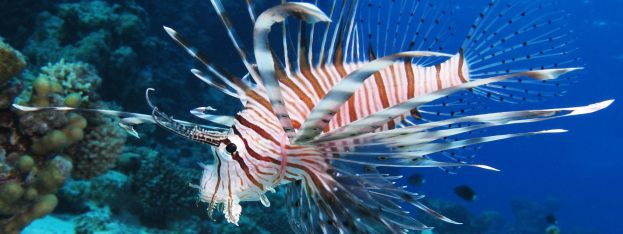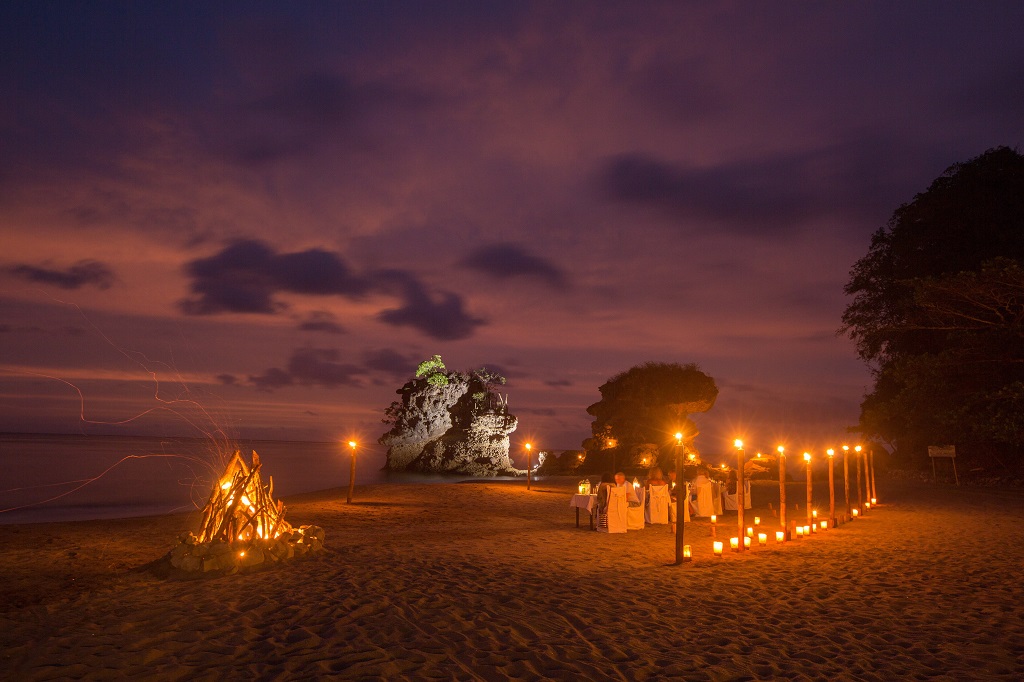
Practicing Sustainability While Battling the Lionfish
Oct 20, 2017
By: Brian Major
Source: Travel Pulse
The Caribbean’s lionfish invasion in recent years is a significant threat to the region’s precious natural environment and by extension its critical tourism industry.
Lionfish reduce native fish numbers by up to 80 percent say experts, severely damaging coral reef systems.
Across the Caribbean, lionfish are threatening the survival of coral reef ecosystems already undermined from other factors including overfishing, pollution and climate change. In some areas, they have reduced native reef fish numbers by up to 80 percent.
The lionfish problem has prompted many Caribbean islands to implement national plans targeting the species’ removal.
The Travel Foundation, a non-profit organization focused on sustainable tourism, is working with major Caribbean tourism organizations to implement sustainable environmental practices and programs, including one with Saint Lucia to address the island’s lionfish invasion. TravelPulse.com spoke with Salli Felton, the group’s CEO, to learn what sustainability measures the organization is launching in the region.

Photo: Salli Fenton of Travel Foundation, Credit: Brian Major
TravelPulse: How did the lionfish invasion happen?
Salli Felton: Lionfish originate from the Indo-Pacific region, but were brought to Florida as aquarium fish. There have been various incidences of them escaping (for instance, during Hurricane Andrew in 1992) or being released.
Over the last thirty years, lionfish have established significant populations across the entire Caribbean Sea. Their high reproductive rates, rapid growth, diverse diet and defensive venomous spines make them more successful than native predators, whose populations have often been reduced through overfishing.
It”s the first non-native marine fish to invade the Caribbean Sea, so its long-term impact on native reefs and ecosystems is unknown.
TP: How did your organization become involved and what are your goals?
SF: The Travel Foundation was already working in the region, and our goal as a non-profit is to find ways for the tourism industry to benefit local people and the environment.
Saint Lucia, which depends on its tourism, is also one of the last Caribbean countries to be invaded by lionfish, with the first recorded sighting in 2011. Research indicates that one of the best ways to control this species is to increase its consumption. In Saint Lucia, there is a lot of potential for increasing demand, particularly among international visitors.
Therefore we are planning to harness tourism to the goal of marine conservation, encouraging fishing communities to catch the lionfish and serve it to tourists, as this has proven to be popular on other Caribbean islands This will not only help native reefs recover but also support the livelihoods of local pot fishers.
TP: How will you accomplish your aims?
SF: The Travel Foundation will work with fishing co-operatives, wholesalers, hotels and tourist restaurants to build supply-chain links, demonstrating the economic value of catching and serving lionfish.
While populations of this species are increasing, its consumption is low, partly due to the misconception in Saint Lucia that the fish is poisonous and can’t be eaten. Although the spines are venomous, with correct handling they can be easily and safely removed.
The fishing community will receive training on the safe handling and processing of lionfish, including [a] supply of puncture-proof fish handling gloves and better traps. We will also make hotels and restaurants aware of the benefits of purchasing lionfish and how to communicate these benefits to customers.
Photo: Lionfish capture in Saint Lucia, Credit: Scuba St Lucia
TP: What resources do you have to implement your plan?
SF: We have obtained grant funding from a UK-based foundation, and in-kind contributions from local partners to support this 18-month project. Two local consultants have been recruited in Saint Lucia to undertake research and coordinate project activities.
TP: How will your work impact leisure travel to the region?
SF: Sustainable tourism initiatives demonstrate to visitors the importance of natural, cultural and heritage attractions—in this instance the coral reef—and provides them with a way to make a difference. Having lionfish on the menu will tell a story and provide a tasty, memorable meal at the same time.
Photo: St Lucia hotel lionfish specialty dinner, Credit: Anse Chastanet Resort
TP: How are you working with Saint Lucia’s government and the Saint Lucia Tourist Board?
SF: The Saint Lucia government has been supportive from the beginning, having been involved in preparing the initial proposal, and we will be working alongside government agencies such as the Department of Fisheries.
Our collaboration with the Saint Lucia Tourist Board will focus on the demand side of the project, making hotels and restaurants aware of the advantages of serving lionfish. The project is designed to be commercially viable and self-sustaining.
TP: What programs is your organization working on with the Jamaica Tourist Board (JTB)?
SF: We have been working with the JTB and its agencies, as well as tourism businesses to improve the scale and spread of income from tourism so that it provides greater benefits to local people.
With support from the TUI Care Foundation, we have initiated and delivered a range of measures to encourage tourists to explore the local area and its attractions rather than remaining within their (often all-inclusive) hotels, such as development of a tourist guide and map of local attractions. We have also trained local craftspeople in marketing and product-development to revitalize a local craft market, which is now receiving increased business from tourists.
TP: What will be the focus of your message to attendees at the UNWTO Global Sustainable Tourism Conference in Montego Bay in November?
SF: The message has to be that, for tourism to have any chance of being sustainable, we must better understand and manage the full range of impacts it has on destinations—social, economic and environmental—and the balance sheet must ultimately favor local residents.
We need to find new ways to do tourism at a scale that will make a difference, in response to the continued growth in tourism numbers.
Tourism assets—the culture, environment and other things that make a place worth visiting—need investment and proper management to ensure that destinations and the industry that depends on them can thrive long into the future.




